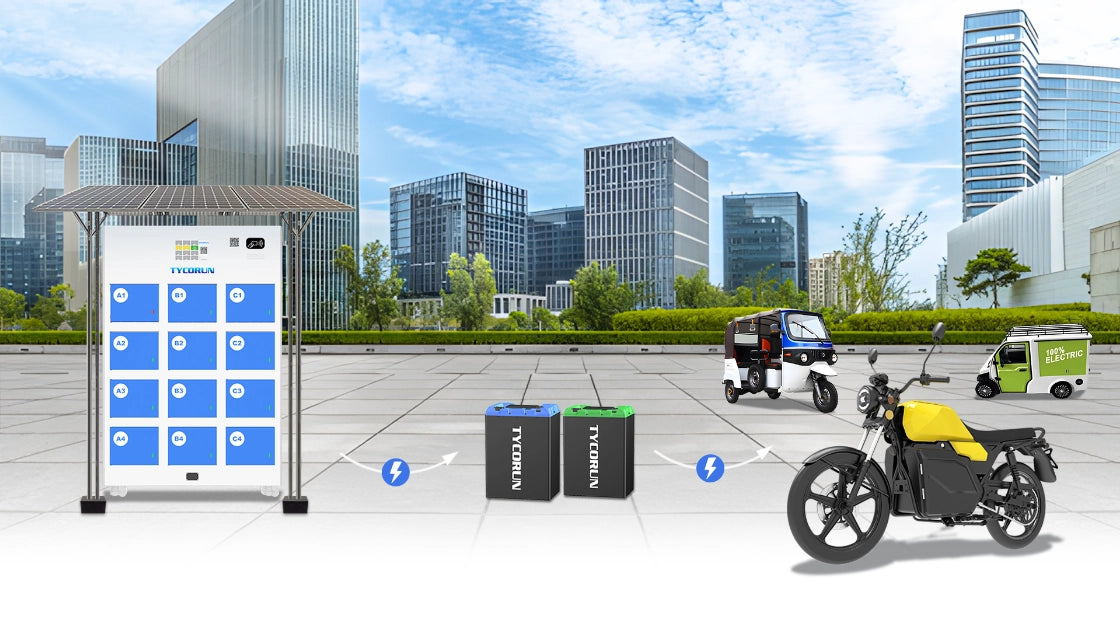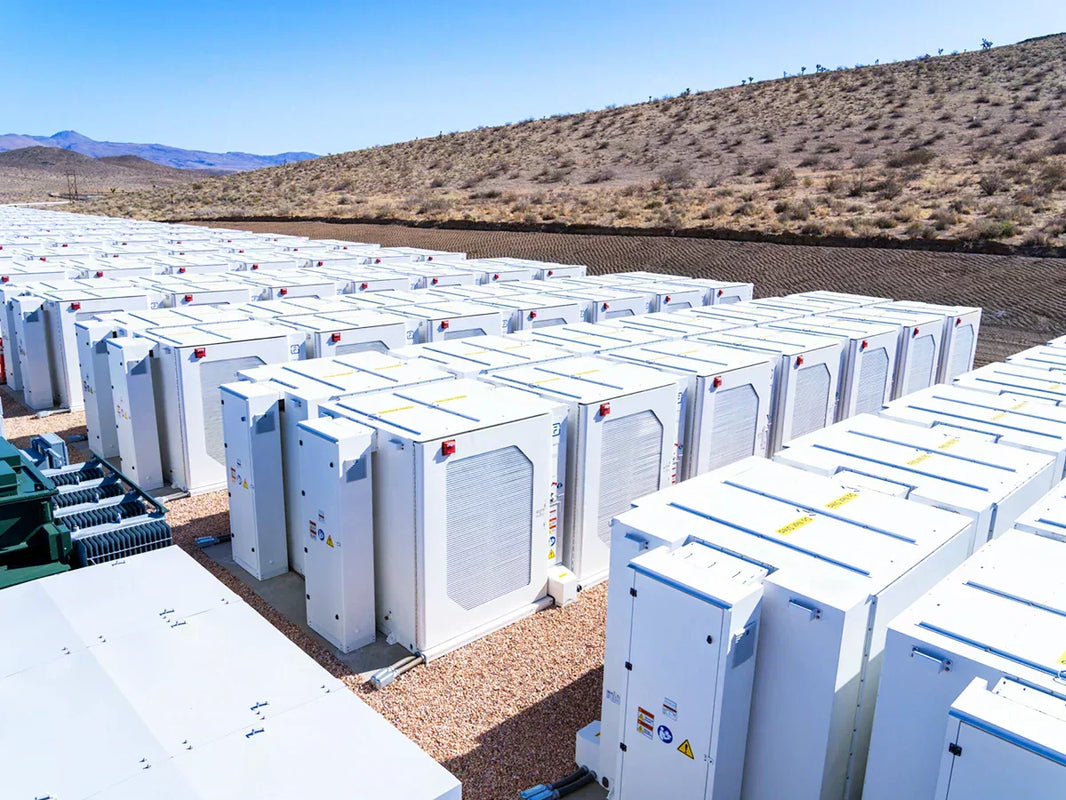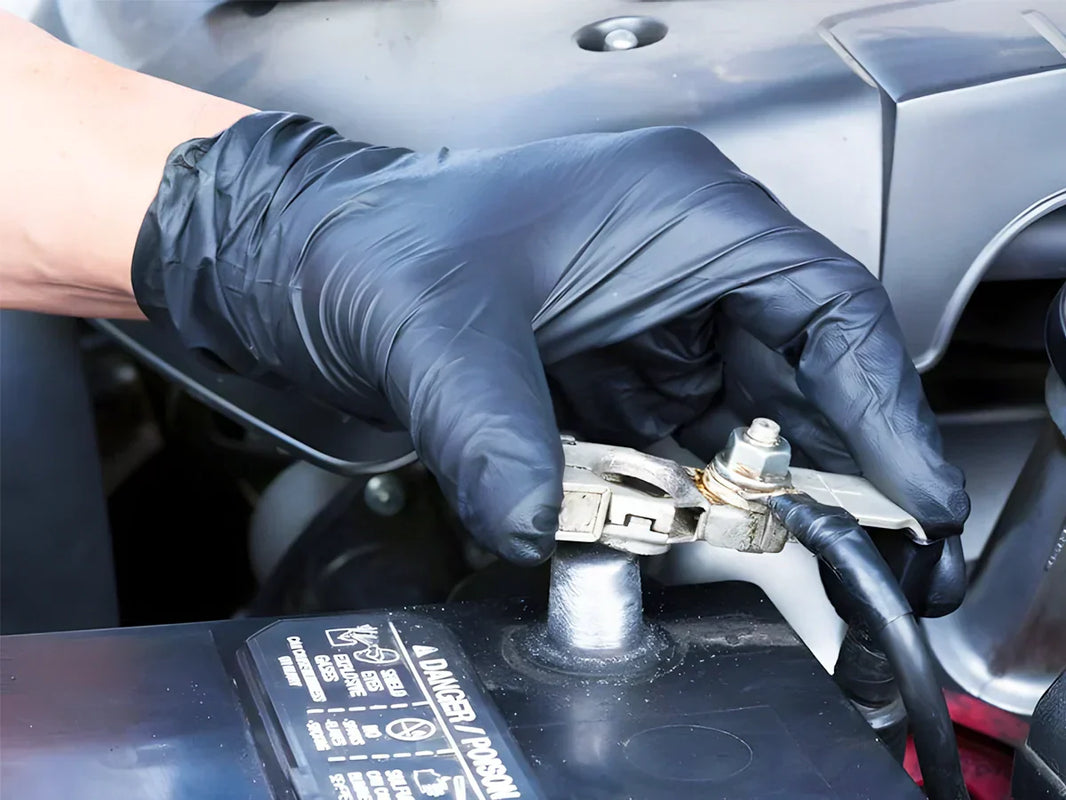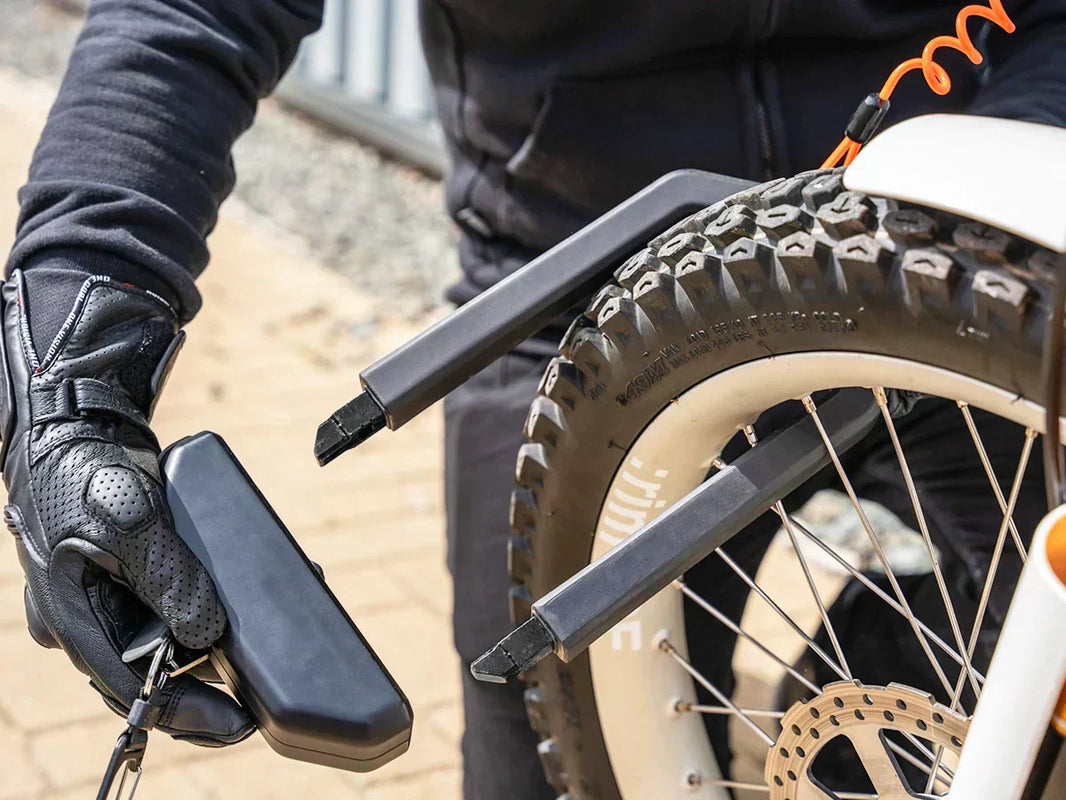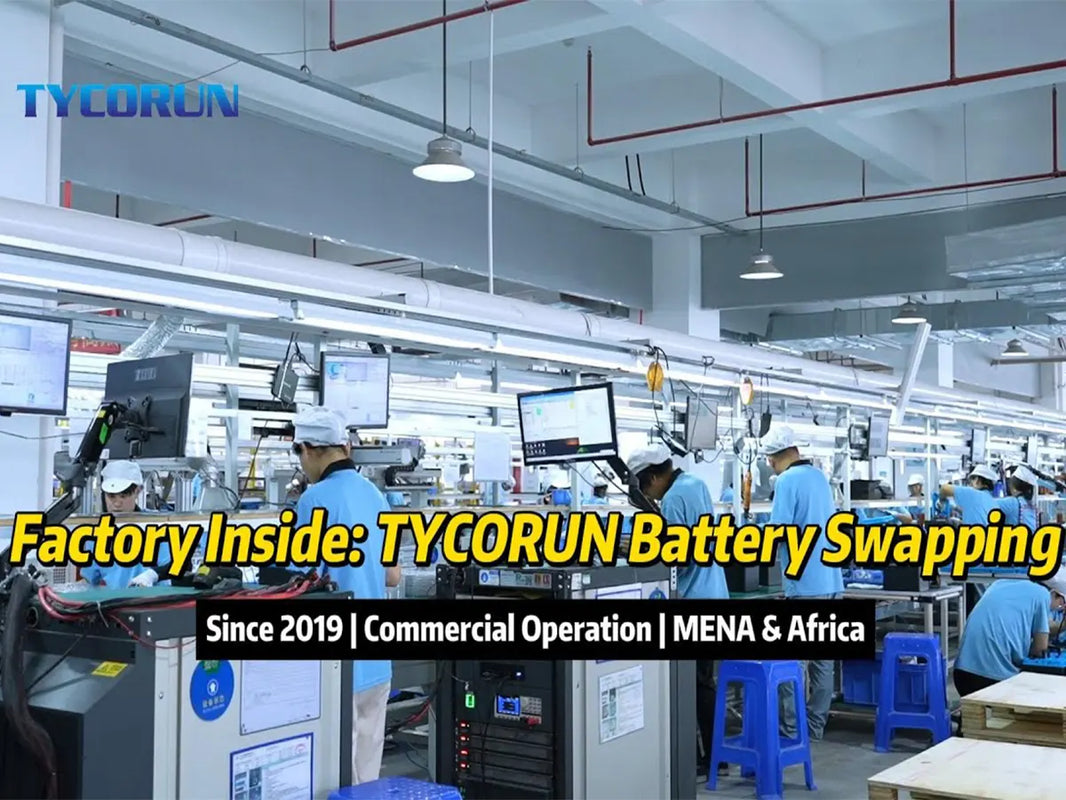
Main content:
- Why You Should Learn About Electric Motorcycle Battery Types
- Electric Motorcycle Battery Types
- How Battery Chemistry Affects Motorcycle Performance
- Tips Before Buying an Electric Motorcycle Battery
- How to Choose the Right Lithium Battery for Your Electric Motorcycle
- Future Trends in Electric Motorcycle Battery Types
- Conclusion
- FAQs
When it comes to powering an electric motorcycle, not all batteries are created equal. Every type of battery functions differently because of the unique chemical reactions and materials inside it. These internal components determine how much energy can be stored, how fast it can be released, and how long the battery lasts — all critical factors for any electric motorcycle.
Understanding electric motorcycle battery types from a scientific perspective helps explain why certain batteries are ideal for this use while others are not. This article will explore how and why various battery chemistries — lead-acid, lithium-ion, lithium iron phosphate, sodium-ion — can serve as reliable power sources for electric motorcycles.
Why You Should Learn About Electric Motorcycle Battery Types
The battery is the heart of every electric motorcycle. It stores energy, powers the motor, and directly affects how far you can ride, how long it takes to charge, and how much maintenance you’ll need. The better you understand electric motorcycle battery types, the easier it becomes to find the right one that fits your usage patterns — from short daily commutes to long road trips.
Different battery technologies have different characteristics. Some are cheaper and easier to maintain but heavier, while others are lighter, more powerful, and longer-lasting but cost more upfront. That’s why knowing the differences between each type of electric motorcycle battery is so important before you buy.
Electric Motorcycle Battery Types

Lead-Acid Batteries
Lead-acid batteries are one of the oldest electric motorcycle battery types still in use today. Their function is based on the reversible chemical reaction between lead dioxide (PbO₂), sponge lead (Pb), and sulfuric acid (H₂SO₄).
During discharge, lead dioxide on the positive plate reacts with sulfuric acid to produce lead sulfate (PbSO₄), while the negative plate of sponge lead also forms lead sulfate. Electrons flow through the external circuit to power the motor. When charging, the reaction reverses, regenerating the original compounds.
- High discharge current: The electrochemical reaction between lead and sulfuric acid provides a strong current output, suitable for motorcycle acceleration.
- Stable voltage curve: Voltage remains consistent during most of the discharge period, ensuring smooth motor operation.
- Tolerant of over-discharge: The chemical system can handle temporary over-discharge without catastrophic damage.
Limitations
The density of lead makes the battery heavy, and the energy density (around 30–40 Wh/kg) limits range. However, their reliable discharge characteristics make them one of the simplest and most accessible electric motorcycle battery types for short-distance rides.
Read: Lead acid vs lithium ion
Lithium Batteries
Lithium-ion batteries
Lithium-ion batteries have become the most dominant among all electric motorcycle battery types because of their superior energy density and efficiency. Their working principle revolves around the movement of lithium ions between the cathode and anode through an electrolyte.
Typically, the anode is made of graphite (carbon), and the cathode uses compounds like lithium cobalt oxide (LiCoO₂), lithium manganese oxide (LiMn₂O₄), or lithium nickel manganese cobalt oxide (NMC). When discharging, lithium ions move from the anode to the cathode through the electrolyte, releasing electrons that power the motor. Charging reverses this process.
Advantages
- High energy-to-weight ratio: Lithium’s low atomic mass (6.94 g/mol) gives it excellent charge capacity per unit mass. Energy densities range from 150 to 250 Wh/kg — much higher than lead-acid.
- Fast ion transfer: Lithium ions move quickly through the electrolyte and separator, allowing both rapid charging and strong current output.
- High cell voltage: Each cell operates at around 3.6–3.7 volts, reducing the number of cells required for motorcycle systems.
Why It’s Suitable
The combination of lightweight materials and fast ion diffusion makes lithium-ion chemistry perfect for high-performance electric motorcycles that need both range and power. These scientific properties are why lithium-ion batteries dominate modern electric motorcycle battery types today.
Lithium Iron Phosphate (LiFePO₄)
Among lithium-based electric motorcycle battery types, LiFePO₄ is one of the most scientifically balanced in terms of safety, stability, and lifespan. Its cathode material, lithium iron phosphate, has a strong olivine crystal structure, which provides excellent resistance to thermal breakdown.
During discharge, lithium ions move from the anode (graphite) to the cathode (LiFePO₄), where iron and phosphate groups maintain a rigid framework. This structure resists overheating and voltage instability.
Advantages
- Thermal stability: The iron-phosphate bond is stronger and less likely to release oxygen, minimizing heat-related reactions.
- Stable voltage plateau: Provides steady output around 3.2 volts per cell, which is ideal for motor control systems.
- High cycle life: Can exceed 2,000–4,000 charge cycles due to minimal crystal degradation during ion movement.
- Chemical safety: Iron and phosphate compounds are less reactive than cobalt-based cathodes, making them inherently stable.
Why It’s Suitable
For electric motorcycles that require consistent power delivery and long-term durability, LiFePO₄ batteries are an excellent match. Their chemistry ensures both safety and reliability under the frequent charge/discharge cycles of daily riding — a vital reason why this chemistry remains one of the leading electric motorcycle battery types.
Sodium Batteries
Sodium-ion batteries are a newer addition to the list of electric motorcycle battery types. They function similarly to lithium-ion batteries but replace lithium ions with sodium ions (Na⁺). Although sodium is heavier, it shares similar electrochemical behavior, allowing comparable energy transfer mechanisms.
The cathode materials often include sodium transition metal oxides like NaFePO₄, while the anode might use hard carbon. During discharge, sodium ions travel from the anode to the cathode through a liquid or solid electrolyte, releasing energy to the motor.
Advantages
- Comparable structure to lithium systems: Sodium ions move in and out of crystal lattices in much the same way as lithium ions.
- Good low-temperature performance: The ionic mobility of sodium remains high even in cold environments.
- Stable chemistry: Sodium-based electrolytes show less risk of dendrite formation, reducing short-circuit risks.
Why It’s Suitable
Although sodium-ion batteries have slightly lower energy density (around 100–160 Wh/kg), they maintain good charge retention and strong current output. The similar electrochemical dynamics make them one of the promising electric motorcycle battery types for future use, especially when lithium resources become constrained.
How Battery Chemistry Affects Motorcycle Performance
Every electric motorcycle battery type behaves differently because of its internal chemistry. The following scientific properties influence real-world motorcycle performance:

For instance, lithium-ion and LiFePO₄ batteries excel in both energy density and voltage stability, allowing motorcycles to travel long distances and maintain high speed without rapid voltage drop. Lead-acid batteries, while chemically stable, cannot compete in energy storage per kilogram. Sodium and graphene-based designs aim to close this gap through improved material science.
Check LiFePO4 vs lead-acid for more insight.
Tips Before Buying an Electric Motorcycle Battery
Choosing among many electric motorcycle battery types can feel confusing, but these practical tips will help you make the best decision:
- Buy from Trusted Sellers:
Purchase only from reputable dealers or manufacturers to avoid fake or unsafe batteries. - Check Product Labels:
Make sure the battery has a clear label showing manufacturer, capacity, model number, and safety certification. - Inspect the Battery’s Physical Condition:
A high-quality new battery should be clean, without cracks or leaks. Corroded terminals are a sign of an old or refurbished product.
Consider Your Riding Habits:
- For short city commutes → Lead-acid or graphene.
- For long rides → Lithium or LiFePO₄.
- For long-term investment → Sodium.
Evaluate Charging Options:
Make sure your charger is compatible with your chosen electric motorcycle battery type to ensure safety and efficiency.
How to Choose the Right Lithium Battery for Your Electric Motorcycle
When selecting a lithium battery for your electric motorcycle, it’s crucial to consider several factors to ensure proper function and efficiency.

- Voltage Compatibility: Most motorcycles use 48V, 60V, or 72V batteries. Always match or slightly exceed your bike’s voltage requirement for stable performance.
- Capacity (Ah Rating): The amp-hour rating determines how much energy the battery stores. Higher capacity extends range but increases size, weight, and cost. Daily riders may prefer lighter options, while performance users benefit from larger ones.
- Size and Weight: Make sure the battery fits securely in your bike’s compartment without affecting balance or handling.
- Lifespan and Durability: Different electric motorcycle battery types offer varying lifespans. Lead-acid lasts around 3 years, lithium-ion up to 10, and LiFePO₄ even longer. Lithium options often include a Battery Management System (BMS) for extra protection.
- Maintenance Needs: Lithium and LiFePO₄ batteries require minimal upkeep compared to lead-acid, which needs regular checks and water refills.
- Charging Speed: Fast-charging capability is a major advantage of lithium batteries, allowing riders to recharge quickly and reduce downtime.
In summary, choosing the right electric motorcycle battery types involves balancing voltage, capacity, size, lifespan, and charging speed to achieve optimal performance and convenience.
Future Trends in Electric Motorcycle Battery Types
The future of electric motorcycle battery types is bright. Researchers are working on improving energy density, reducing costs, and extending lifespans. Sodium and solid-state batteries are expected to lead the next generation of battery technologies, offering ultra-fast charging and even higher safety standards.
In the coming years, you may see motorcycles that can charge in minutes instead of hours, with batteries that last more than a decade. As innovation continues, choosing the right electric motorcycle battery type will become even more exciting and flexible for users.
Conclusion
Choosing the right electric motorcycle battery types is about understanding how each battery’s chemistry affects performance, range, and durability. Lead-acid batteries suit short commutes and lower budgets, while lithium-ion and LiFePO₄ options deliver longer life, faster charging, and higher energy output for daily or long-distance riders. Emerging technologies like sodium-ion and graphene batteries show promise for future efficiency and longevity.
In the end, selecting the best electric motorcycle battery types depends on voltage needs, range expectations, and maintenance preferences. With the right choice, riders can enjoy reliable power, better performance, and a smoother riding experience.
FAQs
Which Is The Most Commonly Used Electric Motorcycle Battery?
Lithium-ion batteries are usually used for modern two-wheelers as they are lightweight and can charge quickly and release charge slowly.
How Long Can an Electric Vehicle Battery Last?
The total lifespan of an electric vehicle battery is depended on the type of battery used. Generally, an electric bike battery lasts for 3-5 years with regular usage.
Is a Lithium Battery Better for Electric Motorcycles?
Yes, lithium batteries are the top choice for electric motorcycles because they last up to three times longer than lead-acid types, are lighter for better handling, charge faster, and deliver stable, consistent power.

